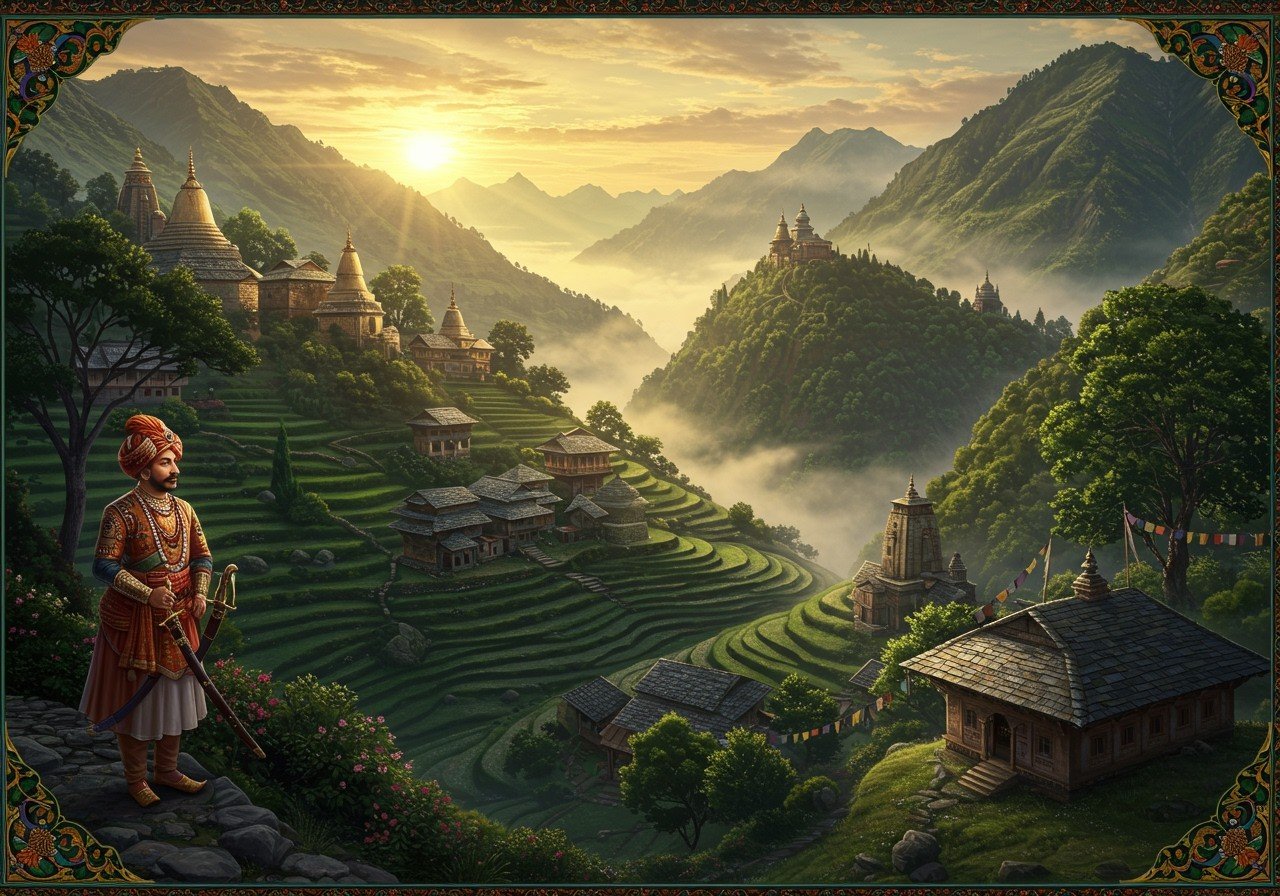
The Punjab Hill States, nestled in the Himalayas, hold a captivating history and rich cultural heritage. This blog delves into their past, geographical context, and cultural significance, offering a glimpse into these unique regions.
Geographical and Cultural Tapestry
The Punjab Hill States encompass regions like Himachal Pradesh and parts of Jammu and Kashmir, shaped by the majestic Himalayas and flowing river valleys. These geographical features have influenced settlement patterns and cultural practices. The area boasts a diverse blend of Hinduism, Buddhism, and indigenous traditions, creating a vibrant cultural tapestry. Festivals and rituals play a vital role, adding to the richness of Punjab’s cultural heritage.
A Journey Through Time: Early History
The history of the Punjab Hill States dates back to prehistoric times, with evidence of early human settlements and ancient civilizations. Vedic culture influenced these regions, integrating them into powerful empires like the Maurya and Gupta dynasties. Local rulers and dynasties played a significant role in shaping the political landscape, while trade routes fostered cultural and economic exchange.
Medieval Period: Dynasties and Developments
The medieval period witnessed the influence of various dynasties, including Rajputs and Mughals, on the Punjab Hill States. Political alliances, conflicts, and conquests shaped their history, leaving behind architectural marvels like forts, palaces, and temples. The hill states played a crucial role in regional power dynamics, interacting with neighboring plains regions. Agriculture, trade, and artisan crafts were vital socio-economic activities.
Colonial Era: Transformation and Resistance
British colonial rule brought significant changes to the Punjab Hill States, introducing new administrative structures and economic policies. These strategically important regions witnessed transformations in land ownership, taxation, and local governance. Resistance movements and uprisings, led by local leaders and heroes, emerged in response to colonial control. The introduction of Western education and legal systems left a lasting impact on society.
Post-Independence Era: Integration and Progress
Following India’s independence in 1947, the Punjab Hill States underwent significant political, economic, and social transformations. They integrated into the Indian Union with new administrative frameworks. Government initiatives focused on improving infrastructure, education, and healthcare. Modernization influenced traditional lifestyles and cultural practices, while the hill states emerged as important contributors to tourism and environmental conservation.
Cultural Heritage: Traditions and Expressions
The Punjab Hill States boast a rich cultural heritage, expressed through vibrant traditional music, dance, and art forms. Unique festivals, such as Dussehra in Kullu and Shivratri in Mandi, showcase the region’s distinct identity. Traditional crafts, including weaving, pottery, and woodwork, continue to thrive. Culinary traditions offer a delightful array of local delicacies and food preservation techniques. Museums, cultural centers, and heritage sites play a vital role in preserving this rich cultural legacy.
Deep Dive into Punjab Hill States History
For a deeper understanding of this fascinating history, explore resources like the two-volume publication on the history of Punjab Hill States. Published by entities including the Superintendent of Government Printing (Punjab) and Asian Educational Services, these volumes offer well-researched historical background and valuable bibliographical references. They shed light on the various small hill kingdoms, now part of Himachal Pradesh and Southern Jammu and Kashmir, that constituted the Punjab Hill States. The first row, bordering the Punjab Plains, included states like Lakhanpur, Jasrota, Samba, Tirikot, Dalpatpur, and Jammu. Further into the hills lay the second row, comprising Basohli, Bhadu, and other states.
Traditional Crafts and Ritual Items from Poojn.in
Poojn.in, India’s leading cultural goods store, offers a wide selection of products that connect you with the rich heritage of Punjab and its hill states. Explore our collection of traditional handicrafts, ritual items, and more. We offer high-quality products that reflect the region’s cultural heritage and are perfect for your spiritual practices and celebrations.
- Original Black Chamar: Experience the traditional craftsmanship of the black chamar, used in ceremonies and rituals. Discover authentic chamars crafted with care and attention to detail.
- Bamboo Kulo: Add a touch of tradition to your puja with our bamboo kulo. These versatile baskets are perfect for offerings and ceremonies. Find the perfect size and design to suit your needs.
FAQs: Exploring the History of Punjab’s Hill States
What defines the Punjab Hill States? The Punjab Hill States are a group of regions in northern India, characterized by their unique history, diverse cultures, and stunning Himalayan landscapes.
Why is their history significant? The history of Punjab Hill States is essential for understanding the region’s cultural heritage, traditions, and the evolution of its distinct identity.
Conclusion
The Punjab Hill States offer a captivating journey through history and cultural heritage. From ancient times to the present day, these regions have evolved, shaped by powerful empires, colonial influences, and the resilience of local traditions. Exploring their history provides a deeper appreciation for the cultural diversity and unique identity of Punjab.


